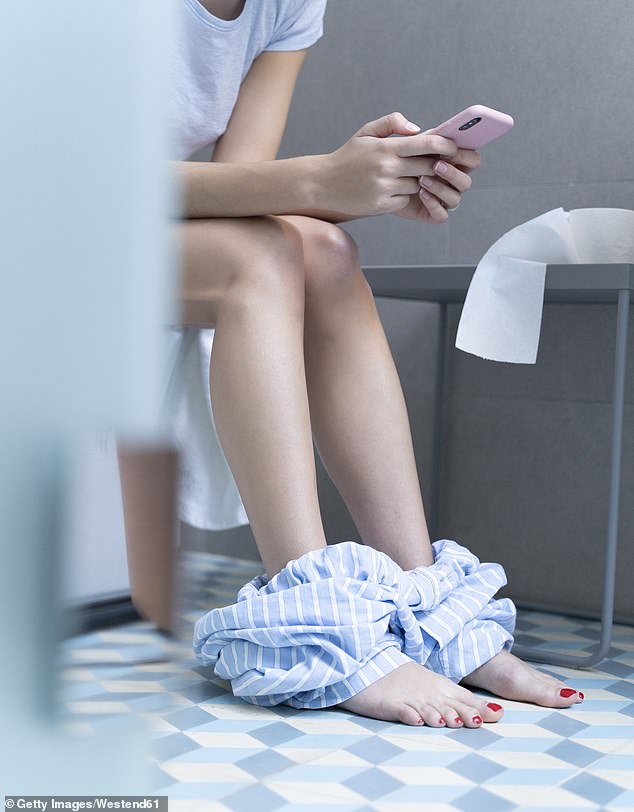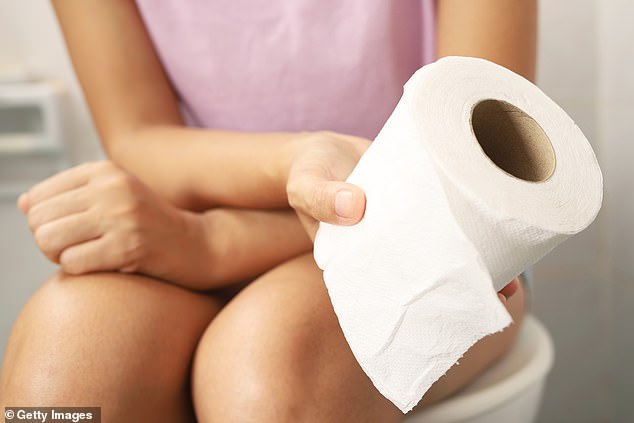To pee or not to pee – either way, you may be doing it wrong.
Dr. Sara Reardon, a pelvic floor physical therapist, recently revealed what you shouldn’t be doing when you pee as she issued a stark warning about how urinating incorrectly can cause poor bladder issues and even UTIs.
Dr. Reardon appeared on Girls’ actress Allison Williams’ new podcast, Landlines, which she hosts with two of her childhood friends, Hope Kremer and Jaymie Oppenheim.
On the episode, Dr. Reardon – also known as the Vagina Whisperer – shared why holding it in, or forcing yourself to pee, can lead to health issues.
‘Don’t push when you pee,’ she told the podcast hosts.
‘You need to sit and chill and just let it flow, and only go when you have the urge to go,’ she explained. ‘Your bladder is a muscle that pushes the pee out for you, you can just sit and chill.’
‘So try not to ‘just in case pee’ or anxious pee or pee every time you cross a bathroom,’ she continued. ‘Because it causes your bladder to shrink and then you’ll have to pee all the time.’
She added it is normal to urinate every ‘two to four hours’ during the day, and up to twice a night.

Dr. Sara Reardon, a pelvic floor physical therapist, recently revealed what you shouldn’t be doing when you pee as she issued a stark warning about how urinating incorrectly can cause poor bladder issues and even UTIs (stock image)
She said that you should be able to hold your pee for at least two hours and it should be almost clear.
The PT added she’s not a big fan of hovering over the toilet, recommending that people sit down when possible to urinate.
Dr. Reardon, who has been working in the field for 17 years, said forcing yourself to urinate can damage the bladder and also lead to urinary tract infections.
According to the National Associate for Continence, there is a best way to empty your bladder.
‘Take a deep belly breath, fully relax, and be present during the process,’ the website reads.
Sitting in the right position is also vital to bladder health.
The NAC recommends sitting up properly on the toilet, no hovering, with your knees above your hips and your palms on your knees.
‘This helps to relax the pelvic floor making the process easier,’ the site noted.


Dr. Reardon (left) appeared on Girls’ actress Allison Williams’ (right) new podcast, Landlines, which she hosts with two of her childhood friends

The PT added she’s not a big fan of hovering over the toilet, recommending that people sit down when possible to urinate (stock image)
They added that sitting on a stool can help keep this position, and being relaxed will ensure you fully empty the bladder.
‘You can wait on the toilet an extra minute after you’ve already urinated then relax and try again,’ they wrote. ‘Or you can get up, walk around for a bit, then sit down and try again. The most important thing is to not strain during the process.’
The site also warned that forcing yourself to urinate can cause muscle confusion, as every time you go and don’t allow urination to happen naturally, it retrains the muscles.
‘They’ll think that each time you pee, you should be activating the pelvic floor vs. relaxing it, creating more problems down the road,’ the site noted.
Other issues outlines were hypertonic pelvic floor issues, which could aggravate the muscles even more and lead to other conditions, like pain or overactive bladder.












